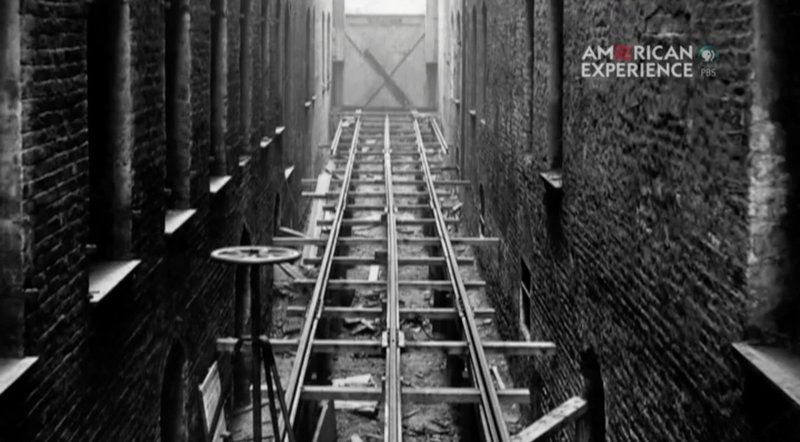

Next week on Tuesday, January 31st, PBS will premiere its next episode of American Experience focusing on the invention of the electric motor that powered America’s first subway system, was tested right here in New York City in 1886. As you can preview in this show clip, The Race Underground traces the transformative ideas of 29-year old American naval officer, Frank Sprague, who envisioned a subway system that would run on electric power instead of the coal of the London Underground. Sprague was primed for the role, having worked initially with Thomas Edison after naval service. He launched a venture under his name, the Sprague Electric Railway & Motor Company, and looked for investors among the Gilded Age barons of the time.

One of these potential investors was railroad magnate Jay Gould, one of the top ten richest men in America at the time. Besides owning more railroad tracks and telephone lines than anybody else in the nation, he also held a majority share of the Manhattan Elevated Railway company. Historian Clifton Hood says in the documentary, “One of the ways you made money in the United States in the Gilded Age was to invest in new technologies. that’s true of steel, that’s true of oil and it’s also true of mass transit,” and notes that private industrialists were the predominant players. Sprague had the opportunity of a lifetime to sell Gould on the latest technology for powering mass transit.

On a short track in on an alley between two brick buildings near the Durant Sugar Factory off East 24th Street near the East River, Sprague met Gould to give a test run. Sprague puts Gould at the front of a flatbed train car as a showman’s move, giving the industrialist a literal front row seat. But Sprague became “a little overzealous,” says Doug Most, the author of The Race Underground: Boston, New York, and the Incredible Rivalry That Built America’s First Subway in which the documentary is partly based on.
The motor was pushed too hard and sparks shot out and hit Gould in the legs – setting him on fire, according to the PBS press release. Gould left vowing never to use the new technology on his railways, but Sprague would later find a backer in Henry Whitney , who ran the West End Street Railway Company in Boston who was looking to connect his lines into the city center. He proposed a consolidation of Boston’s existing seven streetcar companies, to be controlled by him, and build the nation’s first subway system powered by Sprague’s technology. Boston, not New York City, thus became the first city in America to launch a comprehensive subway system. Transit connoisseurs will of course note the pneumatic subway, the first attempt at underground transit in New York City by Alfred Ely Beach. Bankrolled by Beach, the single track, single car line ran for only one block below Broadway from Warren Street to Murray Street from 1870 to 1873.
American Experience Executive Producer Mark Samels says, “Each day, millions of Americans step onto a subway car and travel underground and don’t think twice about it. It’s fascinating to see how the concept of the subway — a seemingly impossible invention that once struck terror in the heart of the public — so quickly became an everyday part of life for millions of American commuters.”
Through Sprague would never be as famous as Thomas Edison or Nikola Tesla, he left a significant mark not only in the industry but also on New Yorkers – he designed the track signal system for Grand Central Terminal and the Wilgus-Sprague bottom contact third rail system used by trains going into the terminal.
See The Race Underground on PBS Tuesday, January 31st. Next, also check out the Top 10 Secrets of the NYC Subway System and join us for an upcoming underground tour of the NYC subway:


